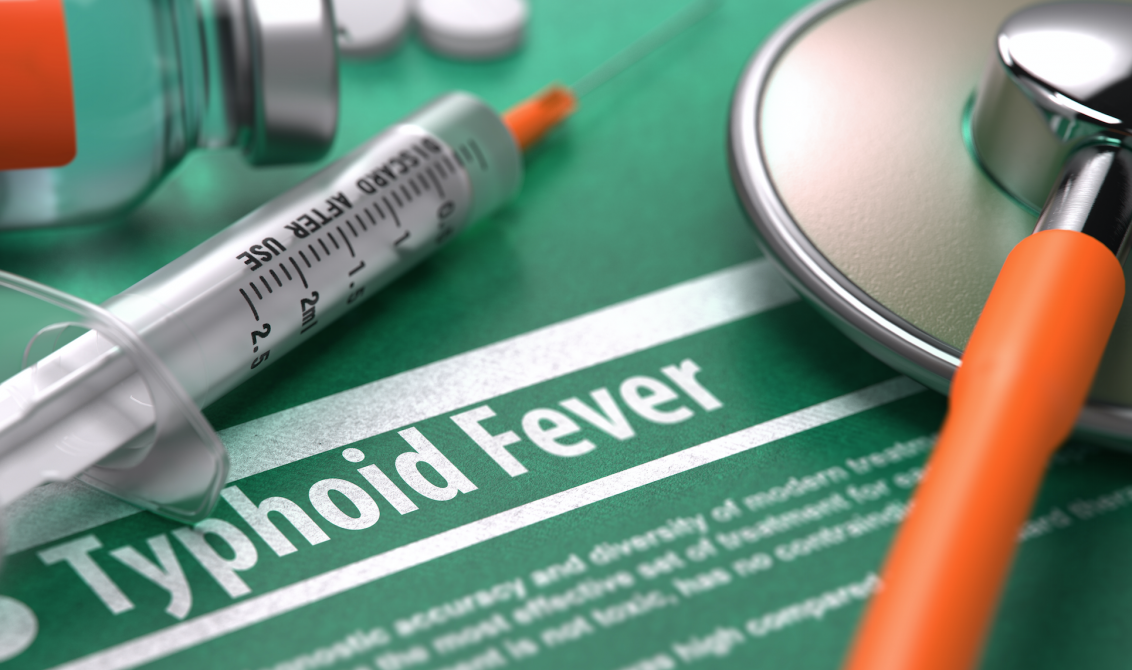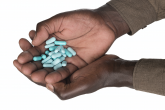
In Nigeria and other parts of Sub-Saharan Africa, Typhoid is commonly the “fall-back” diagnosis of doctors for any diarrheal illness or, when a patient fails to respond to malaria treatment or appears to relapse after an initial period of improvement. Some doctors even hedge their bets, treating patients from the very start with both antimalarial drugs and antibiotics! The problem there is that a multi-drug resistant strain of Salmonella Typhi, the bacteria that causes typhoid, is spreading steadily across Asia and Africa.

Typhoid Fever frequently occurs where poor sanitation and lack of clean water for drinking and food preparation exist. It is most prevalent in Asia and until recently was thought to have only a low to moderate incidence in Africa. However, new research funded by the Bill and Melinda Gates Foundation shows that the incidence of Typhoid Fever in some parts of Africa is as high as in Asia. Recent outbreaks in Malawi, Uganda, and Zimbabwe support the research findings. In contrast, developed nations have reduced the incidence of Typhoid Fever from epidemic levels in the early 1900s to only a few hundred cases per year through improvement in sanitation and hygiene and the use of antibiotics.
The bacteria Salmonella Typhi causes Typhoid Fever. It is a communicable disease spread through water or food contaminated with the feces of infected persons, causing fever, headache, and other symptoms. The disease can be fatal in 20% of cases if untreated and can lead to complications. Every year, there are up to 21 million cases with about 220,000 deaths.

How do you know you have Typhoid?
Anyone can develop Typhoid Fever, but the most vulnerable group is children less than 15 years old. The illness begins gradually one to three weeks after exposure to the disease and can last for up to six weeks.
Early signs and symptoms can include:
- Fever starts low, reaches as high as 40.5 C
- Headache
- Weakness and fatigue
- Muscle aches
- Sweating
- Dry cough
- Loss of appetite and weight loss
- Abdominal pain
- Diarrhea or constipation
- Rash
- Extremely swollen abdomen
If left untreated, you may become delirious, semi-conscious or develop serious complications like pneumonia, sepsis or perforated intestines. Relapse frequently occurs with Typhoid, with signs and symptoms returning, up to two weeks after the fever has gone.
Blood or stool tests can confirm the presence of the Salmonella Typhi bacteria. Unfortunately, the blood test is not very sensitive and can miss a good percentage of infections. Bone marrow testing which is the most reliable test is very expensive and not readily available in Africa.
How is it treated?
Antibiotics are effective in treating Typhoid Fever but can cause drug-resistance if used for extended periods. Drinking lots of fluids are helpful in preventing or treating the dehydration that arises from excessive diarrhea.
Why we should be concerned
There are good reasons to be very concerned about Typhoid Fever in Africa. Estimates are that by 2050 more than half of all Africans will live in urban areas. If infrastructure development fails to keep up with the population explosion, worsening overcrowding, poor sanitation and lack of clean water will accelerate the spread of Typhoid in cities throughout Africa.
- Weak health systems will be further strained
- Drug resistance will rise – already evident in Zambia and Malawi; it causes more severe infections which are harder and more expensive to treat
- Carrier state will increase – a small number of people who recover from Typhoid continue to carry and spread the disease even though they have no symptoms.
- Improvement in Under 5 Mortality rate will reverse – children are the most vulnerable group to the infection.
What can you do to protect yourself?
In the absence of an infrastructure that supports adequate sanitation, proper personal hygiene, regular hand washing, boiling drinking water or using bottled water are all good ways to protect yourself and your family. Typhoid vaccines that provide protection against the infection for two to seven years are available but currently recommended only for international travelers visiting areas where Typhoid Fever is endemic.
Please do not self-medicate with antibiotics! If you suspect that you or a family member has Typhoid, seek immediate help at a medical facility.

